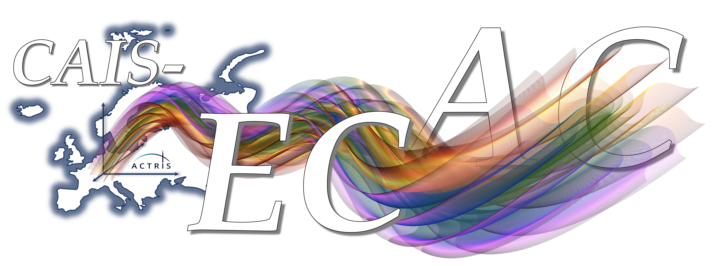
The upcoming ACTRIS CAMS_21a meeting is scheduled for April, the 20nd 2021.

The ACTRIS aerosol in situ community meeting is scheduled for April, the 22nd 2021.

The ACTRIS aerosol in situ community meeting is scheduled for April, the 22nd 2021. During this half-day meeting, the meeting will focus on the collection of 2020 data, COVID related studies, feedbacks on the Colossal meeting, GAW initiatives, as well as National Facilities labelling issues.
Managers of ACTRIS National Facilities connected to the ACTRIS Centre of Aerosol in Situ (CAIS-ECAC) are warmly encouraged to join the event.
More detailed information will be provided in due time.
Managers of ACTRIS National Facilities connected to the ACTRIS Centre of Aerosol in Situ (CAIS-ECAC) are warmly encouraged to join the event.
More detailed information will be provided in due time.

LABEC, the INFN accelerator laboratory hosting the EMC2 unit, is participating in a European research infrastructure of ion beam facilities, RADIATE (https://www.ionbeamcenters.eu/), that currently offers transnational access (TA) to the external-beam PIXE-PIGE facility for atmospheric aerosol sample analysis to external users.
Member of ACTRIS can benefit of this opportunity for high-sensitivity and high-throughput elemental analysis of atmospheric aerosols collected on daily, hourly and size-segregated (e.g. impactor) samples, using Ion Beam Analysis techniques, typically PIXE and PIGE with 3 MeV proton beams and exploiting a dedicated detection set-up made by an array of Silicon Drift Detectors for X-ray spectroscopy.
Given the pandemic situation hands-off experiments are welcomed: the user sends the aerosol samples, we will analyse them and then we will send them back.
The users have to submit a proposal to RADIATE’s proposal submission system, RADIATE GATE (https:// gate.hzdr.de/user/). Check this presentation as a guideline.
Access is granted free of charge to positively evaluated proposals. Download the proposal template to prepare your proposal.
Information on how to submit a measurement proposal to RADIATE TA can be found at the following website:
https://www.ionbeamcenters.eu/radiate/radiate-transnational-access/
After the beam time at LABEC , once the measurements are finished, you will have to submit an experimental report in RADIATE GATE.
It is suggested that you contact Massimo Chiari (chiari@fi.infn.it) before submitting a proposal for advice on the beam analysis method and requested hours that are most appropriate, and for support in proposal submission.
Member of ACTRIS can benefit of this opportunity for high-sensitivity and high-throughput elemental analysis of atmospheric aerosols collected on daily, hourly and size-segregated (e.g. impactor) samples, using Ion Beam Analysis techniques, typically PIXE and PIGE with 3 MeV proton beams and exploiting a dedicated detection set-up made by an array of Silicon Drift Detectors for X-ray spectroscopy.
Given the pandemic situation hands-off experiments are welcomed: the user sends the aerosol samples, we will analyse them and then we will send them back.
The users have to submit a proposal to RADIATE’s proposal submission system, RADIATE GATE (https:// gate.hzdr.de/user/). Check this presentation as a guideline.
Access is granted free of charge to positively evaluated proposals. Download the proposal template to prepare your proposal.
Information on how to submit a measurement proposal to RADIATE TA can be found at the following website:
https://www.ionbeamcenters.eu/radiate/radiate-transnational-access/
After the beam time at LABEC , once the measurements are finished, you will have to submit an experimental report in RADIATE GATE.
It is suggested that you contact Massimo Chiari (chiari@fi.infn.it) before submitting a proposal for advice on the beam analysis method and requested hours that are most appropriate, and for support in proposal submission.










